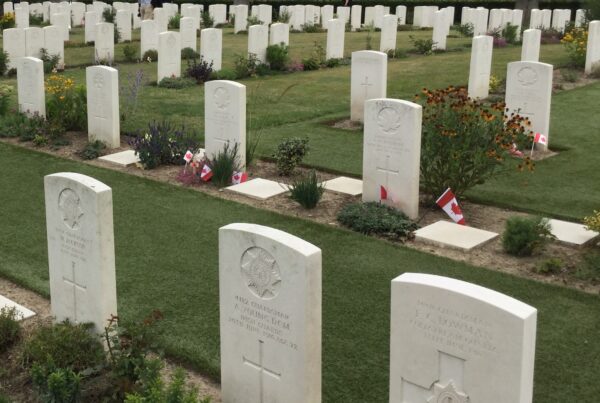In January 2020 the Association received an email from M Bernard Herve living in the High Normandy region of France.
Bernard had found a British Army identity disc in a wood just behind his house and wanted to return it to the family of the owner. The name on the disc was barely legible, but details on the bracelet were given as ‘Sgt Alane, 12th LONDONS’. The disc formed part of a bracelet, the like of which I had not seen before.

Identity discs had been introduced in 1907 and were in the form of two discs suspended on a cord worn around the neck. In the event of the wearer becoming a fatality, one disc would be detached and handed in at the nearest HQ thus recording the death and the other would be left on the body for identification. However, identity discs along with many other items of kit may not have been issued to the Territorial Force. An identity bracelet may have been supplied by the 12th LONDONS to all their soldiers upon mobilisation. Irrespective of who supplied the bracelet, the first task was to trace the family of Sergeant Alane. However, there was no record of a Sgt Alane ever having served with the 12th LONDONS.
I then examined the photograph of the ID disc enhancing the image to full size. What the finder would not have noticed with the naked eye is that the soldier concerned was, in fact, ‘CQMSgt E.A. Lane’.


Unusually, Colour Sergeant Lane’s military record is still available and we were eventually able to track down Mr Tim Marchant-Lane, CQMSgt E.A. Lane’s grandson, living in Petworth West Sussex and Bernard was then able to send him the identity bracelet.
Earnest Lane was wounded in April 1917 and he likely lost the bracelet at an Aid Post set up in the Wood behind Bernard’s house. He returned to active service and was eventually released from the Army in 1919.
A pre-war Territorial soldier in the 12th (County of London) Battalion, The London Regiment (Rangers), Earnest was an accountant by profession. In 1966 he retired as the Borough Treasurer of Guildford. He was also a talented artist having his painting of Paul Getty’s House (Sutton Place) hung in the Royal Academy.
By Derrick Harwood, GL RFCA Historian and Archivist




